If you just got here … it’s almost time… and what is time anyway?
Stay tuned.


Look up to the stars, to the horizon of our next human adventure.
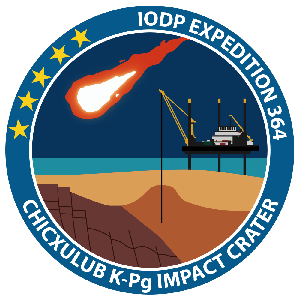
If the rock that hit the Earth 66 million years ago had been just a little later, or a little earlier, we might not be here talking about it.
“They illustrate what happened in the seconds and hours after the impact, revealing that had the huge asteroid struck the Earth a moment earlier, or later, the destruction might not have been total for the dinosaurs. And if they still roamed the world, we humans may never have come to rule the planet.” — BBC Two — The Day the Dinosaurs Died
I was once almost eaten by a shark in the warm waters off Chicxulub. It was 1972 and I was on holiday in Mexico. We were spending a week in the Yucatan. After leaving Merida our concierge, driver, cook, and friend took us to his mother-in-law’s summer home on the beaches of Chicxulub. My spanish is not good and I thought we had rented the little cabin/hut in the back of the beach front property. “No, no esa cosa pequeña … esa casa grande!”
It was awesome. The sand, the art, the cool tiles, the warm sea … and it seemed that we had it all to ourselves. After a few days of our fabulous holiday, my partner had to go into town about the car rental, but despite the warnings I’d heard about swimming with a partner, I couldn’t stay out of the ocean and I went into those waves anyways. I’m splashing around about 100 feet off shore when I noticed a small boy on the beach, jumping up and down, waving, and yelling at me … “hola!” “What’s that you’re saying?” I swam back to shore but he ran away, up the beach, toward the nearby small town of Chicxulub.
My partner and I regularly walked into Chicxulub in the evening, where we ate street food and soaked up the ambiance. That night, as we walked along the beach, we could see there was quite a happening on the town dock, boats and trucks, lots of people, lights and action. It wasn’t long before we were at the scene and had it figured out. They were hauling a huge dead shark onto the dock. This was no baby shark. It was gianormous. Indeed I’m convinced it was the inspiration for the movie “Jaws” which was released only a few years later. When people talked about the movie I thought, that was nothing! You should have seen the monster we saw in Chicxulub!
Anyways, we left the dock and walked the short distance to a large restaurant we had planned to eat at on our last day in the Yucatan. We enter, and who is the first person I see? The boy who was on the beach that morning! He seemed really happy to see me and soon his Dad was ushering us to a table where he handed us a couple of menus. And there, on the menu, was the word the boy had been yelling at me that afternoon. Hola! tiburón! tiburón! tiburón! “
Then, in 1980, the father-and-son team of scientists Luis and Walter Alvarez, suggested the hypothesis that the mass extinction of the dinosaurs was caused by the impact of a large asteroid hitting Earth. And last year, ECORD, the European Consortium for Ocean Research Drilling, launched an expedition to drill core from the crater peak of that event. Here is the web page.
http://www.ecord.org/expedition364/
Here is the flyer.

Happy Trails! Send me a postcard!

Moving Stars and Earth for Water event is a World premiere artistic event which will be presented via Live Webcast on ONE DROP’s website (http://www.onedrop.org) on October 9, at 8:00 p.m. EDT. (That’s 5:00 p.m. PDT)
After a year training and paying the $35 million ticket price, Guy Laliberte, first Canadian Space Tourist and Founder/CEO of Cirque du Soleil, launched from Baikonur to the Internationl Space Station on September 30. He arrived at ISS today, October 30, for two weeks aboard the orbiting station.
Guy’s blog… http://www.onedrop.org/en/mission_space/guy_laliberte_space/
Facebook group: http://www.facebook.com/ONE.DROP.Foundation

INTERNATIONAL YEAR OF ASTRONOMY 2009
No matter where you live on this planet, this is the year to discover the Universe.
Launch of IYA activities — Victoria, BC

June 27, 2008 NASA Jet Propulsion Laboratory info@jpl.nasa.gov
Continue reading “100 Years of Space Rock: The Tunguska Impact”
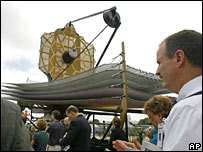
The model of the JWST is on display in Washington DC. The US space agency Nasa has unveiled a model of a space telescope that scientists say will be able to see to the farthest reaches of the Universe. The James Webb Space Telescope (JWST) is intended to replace the aging Hubble telescope. It will be larger than its predecessor, sit farther from Earth and have a giant mirror to enable it to see more. Officials said the JWST – named after a former Nasa administrator – was on course for a launch in June 2013.
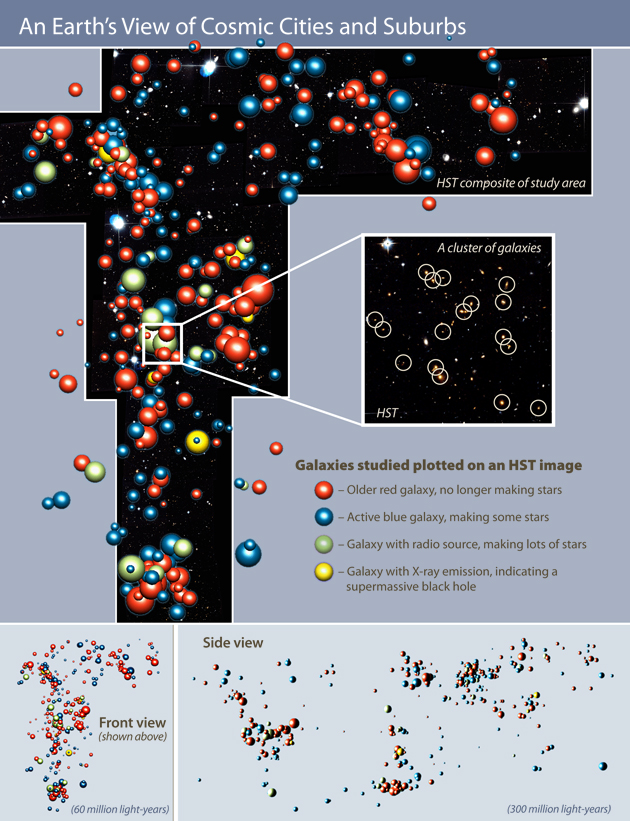
Written by Linda Vu, Spitzer Science Center
May 28, 2007
Large galaxy clusters are the universe’s metropolises, and for years many astronomers have focused their attention on the crowded “downtowns.” However, a new map of some of the largest ancient galactic cities shows that much of the “action” is happening in the cosmic suburbs.
Keep on reading!
Report Reveals Likely Causes of Mars Spacecraft Loss

WASHINGTON – After studying Mars four times as long as originally planned, NASA’s Mars Global Surveyor orbiter appears to have succumbed to battery failure caused by a complex sequence of events involving the onboard computer memory and ground commands.
The causes were released today in a preliminary report by an internal review board. The board was formed to look more in-depth into why NASA’s Mars Global Surveyor went silent in November 2006 and recommend any processes or procedures that could increase safety for other spacecraft.
Mars Global Surveyor last communicated with Earth on Nov. 2, 2006. Within 11 hours, depleted batteries likely left the spacecraft unable to control its orientation.
Guy Webster 818-354-6278
Jet Propulsion Laboratory, Pasadena, Calif.
Dwayne Brown 202-358-1726
NASA Headquarters, Washington
“The loss of the spacecraft was the result of a series of events linked to a computer error made five months before the likely battery failure,” said board Chairperson Dolly Perkins, deputy director-technical of NASA Goddard Space Flight Center, Greenbelt, Md.
On Nov. 2, after the spacecraft was ordered to perform a routine adjustment of its solar panels, the spacecraft reported a series of alarms, but indicated that it had stabilized. That was its final transmission. Subsequently, the spacecraft reoriented to an angle that exposed one of two batteries carried on the spacecraft to direct sunlight. This caused the battery to overheat and ultimately led to the depletion of both batteries. Incorrect antenna pointing prevented the orbiter from telling controllers its status, and its programmed safety response did not include making sure the spacecraft orientation was thermally safe.
The board also concluded that the Mars Global Surveyor team followed existing procedures, but that procedures were insufficient to catch the errors that occurred. The board is finalizing recommendations to apply to other missions, such as conducting more thorough reviews of all non-routine changes to stored data before they are uploaded and to evaluate spacecraft contingency modes for risks of overheating.
“We are making an end-to-end review of all our missions to be sure that we apply the lessons learned from Mars Global Surveyor to all our ongoing missions,” said Fuk Li, Mars Exploration Program manager at NASA’s Jet Propulsion Laboratory, Pasadena, Calif.
Mars Global Surveyor, launched in 1996, operated longer at Mars than any other spacecraft in history, and for more than four times as long as the prime mission originally planned. The spacecraft returned detailed information that has overhauled understanding about Mars. Major findings include dramatic evidence that water still flows in short bursts down hillside gullies, and identification of deposits of water-related minerals leading to selection of a Mars rover landing site.
The Jet Propulsion Laboratory, Pasadena, Calif., manages Mars Global Surveyor for NASA’s Science Mission Directorate, Washington. Lockheed Martin Space Systems, Denver, developed and operates the spacecraft.
Information about the Mars Global Surveyor mission, including the preliminary report from the process review board and a list of some important discoveries by the mission, is available on the Internet at:
http://www.nasa.gov/mission_pages/mgs

— Beth A. Biller is part of an international team of astronomers trying to tease out images of planets around young stars by removing the distortions caused by Earth’s atmosphere.
Extrasolar planets are extremely faint targets to begin with, and an atmospheric effect known as “speckling” has thwarted most previous attempts to observe them directly. Using instruments installed at the Very Large Telescope in Chile, Biller’s team has constructed some of the highest contrast images every obtained of substellar objects.
Her work is also helping determine requirements for NASA’s Terrestrial Planet Finder, a future mission that will directly observe and characterize habitable planets around nearby stars. Currently a doctoral candidate at the University of Arizona, she presented her research in an oral session at this year’s winter meeting of the American Astronomical Society. She is a native of the Washington, D.C., area.
MAUNA KEA (February 4, 2005) Astronomers using the Keck I telescope in Hawaii are learning much more about a strange, thermal ” hot spot” on Saturn that is located at the tip of the planet’s south pole. In what the team is calling the sharpest thermal views of Saturn ever taken from the ground, the new set of infrared images suggests a warm polar vortex at Saturn’s south pole — the first to ever be discovered in the solar system. This warm polar cap is home to a distinct compact hot spot, believed to contain the highest measured temperatures on Saturn. A paper announcing the results appears in the Feb. 4th issue of “Science.”
A ” polar vortex” is a persistent, large-scale weather pattern, likened to a jet stream on Earth that occurs in the upper atmosphere. On Earth, the Arctic Polar Vortex is typically located over eastern North America in Canada and plunges cold arctic air to the Northern Plains in the United States. Earth’s Antarctic Polar Vortex, centered over Antarctica,is responsible for trapping air and creating unusual chemistry, such as the effects that create the ” ozone hole.” Polar vortices are found on Earth, Jupiter, Mars and Venus, and are colder than their surroundings. But new images from the W. M. Keck Observatory show the first evidence of a polar vortex at much warmer temperatures. And the warmer, compact region at the pole itself is quite unusual.
” There is nothing like this compact warm cap in the Earth’s atmosphere,” aid Dr. Glenn S. Orton, of the Jet Propulsion Laboratory in Pasadena and lead author of the paper describing the results. ” Meteorologists have detected sudden warming of the pole, but on Earth, this effect is very short-term. This phenomenon on Saturn is longer-lived because we’ve been seeing hints of it in our data for at least two years.”
The puzzle isn’t that Saturn’s south pole is warm; after all, it has been exposed to 15 years of continuous sunlight, having just reached its summer Solstice in late 2002. But both the distinct boundary of a warm polar vortex some 30 degrees latitude from the southern pole and a very hot “tip” right at the pole were completely unexpected.
“ If the increased southern temperatures are solely the result of seasonality, then the temperature should increase gradually with increasing latitude, but it doesn’t,” added Dr. Orton. “ We see that the temperature increases abruptly by several degrees near 70 degrees south and again at 87 degrees south.”
The abrupt temperature changes may be caused by a concentration of sunlight-absorbing particulates in the upper atmosphere which trap in heat at the stratosphere. This theory explains why the hot spot appears dark in visible light and contains the highest measured temperatures on the planet. However, this alone does not explain why the particles themselves are constrained to the general southern part of Saturn and particularly to a compact area near the tip of Saturn’s south pole. Forced downwelling of relatively dry air would explain this effect, which is consistent with other observations taken of the tropospheric clouds, but more observations are needed.
More details may be forthcoming from an infrared spectrometer on the joint NASA/ESA Cassini mission which is currently orbiting Saturn. The Composite Infrared Spectrometer (CIRS) measures continuous spectral information spanning the same wavelengths as the Keck observations, but the two experiments are expected to complement each other. Between March and May in 2005, the CIRS instrument on Cassini will be able to look at the south polar region in detail for the first time. The discovery of the hot spot at Saturn’s south pole has prompted the CIRS science team, one of whom is Dr. Orton, to spend more time looking at this area.
” One of the obvious questions is whether Saturn’s north pole is anomalously cold and whether a cold polar vortex has been established there,” added Dr. Orton. “This is a question that can only be answered by the Cassini’s CIRS experiment in the near term, as this region can not be seen from Earth using ground-based instruments.”
Observations of Saturn were taken in the imaging mode of the Keck Long Wavelength Spectrometer (LWS) on February 4, 2004. Images were obtained at 8.00 microns, which is sensitive to stratospheric methane emission, and also at 17.65 and 24.5 microns, which is sensitive to temperatures at various layers in Saturn’s upper troposphere. The full image of the planet was mosaicked from many sets of individual exposures.
Future work observing Saturn will include more high-resolution thermal imaging of Saturn, particularly due to the fact that the larger polar vortex region may change in the next few years. The team has also discovered other phenomena which could be time dependent and are best characterized by imaging instruments at Keck, such as a series of east-west temperature oscillations, most prominently near 30 degrees south. These effects appear to be unrelated to anything in Saturn’s relatively featureless visible cloud system, but the variability is reminiscent of east-west temperature waves in Jupiter which move very slowly compared to the rapid jets tracked by cloud motions.
Funding for this research was provided by NASA’s Office of Space Sciences and Applications, Planetary Astronomy Discipline, and the NASA Cassini project. The Cassini-Huygens mission is a cooperative project of NASA, the European Space Agency, and the Italian Space Agency. The Jet Propulsion Laboratory, a division of the California Institute of Technology in Pasadena, manages the Cassini-Huygens mission for NASA’s Science Mission Directorate, Washington, D.C.
The W.M. Keck Observatory is operated by the California Association for Research in Astronomy, a non-profit scientific partnership of the California Institute of Technology, the University of California, and NASA.
April 20th, 2007
H.R. MacMillan
Science Centre
Vancouver, B.C.
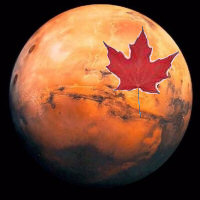
The Maple Leaf on Mars!
Canada will land on the surface of another planet for the first time when Phoenix, an international mission to Mars, touches down in 2008. Slated for launch on August 3, 2007, Phoenix will dig beneath Mars’s surface in search of ice – in search of life. Two Canadian instruments on board Phoenix will study Mars’s weather and climate to pave the way for future exploration missions.
Join the Canadian Space Agency’s Dr. Victoria Hipkin at the H.R. MacMillan Science Centre at 7:30 p.m. on Friday, April 20, 2007, for a special presentation on this exciting mission. Try a space science experiment at the Canadian Space Agency’s information booth. Learn everything you ever wanted to know about the Red Planet, and why the world’s scientists want to explore it.
The Phoenix mission is led by the University of Arizona, with Canadian expertise from a wide range of partners in universities and industry from many regions of the country: York University, the University of Alberta, Dalhousie University, the Geological Survey of Canada, MDA and Optech.
For more information visit www.spacecentre.ca or www.space.gc.ca.
The conquest of space has been a dream of humans for centuries. Only in the last five decades however, have we had the technology to explore the cosmos. Until recently, this technology has been limited to only a few countries, including the United States, which leads the world. Lately though, Canada, too, has been gaining a foothold in space science.
Canadian scientists and engineers have made a series of important contributions to space missions, like Radarsat, the robotic Canadarms for the space shuttle and the International Space Station, and the MOST space telescope, just to name a few. Now, under the auspices of its own space agency, Canada is partnering with other countries to help explore the Red Planet. In its latest project, the Canadian Space Agency (CSA) is collaborating with NASA on its next Mars lander, called Phoenix, scheduled for launch in 2007. Hopes are high that the Canadian maple leaf will soon be seen on Mars.
As the Mars Program lead at CSA, Dr. Alain Berinstain (pictured above) acts as the link between the scientific community and research and development teams in government and industry. He is also responsible for science missions that explore the planets (including Mars), Mars-analog sites on Earth, and astronomy missions. Berinstain has a Bachelor’s degree in chemistry and biochemistry and a doctorate in chemistry, specializing in the effects of radiation on biological systems. As adjunct professor at University of Guelph, he also conducts research into environmental controls systems for greenhouses in extreme environments. We interviewed him via telephone last week.
http://sciencecareers.sciencemag.org/career_development/previous_issues/
articles/3360/a_maple_leaf_on_mars_interview_with_canada_s_mars_exploration_lead/(parent)/158
For Release: February 21, 2007
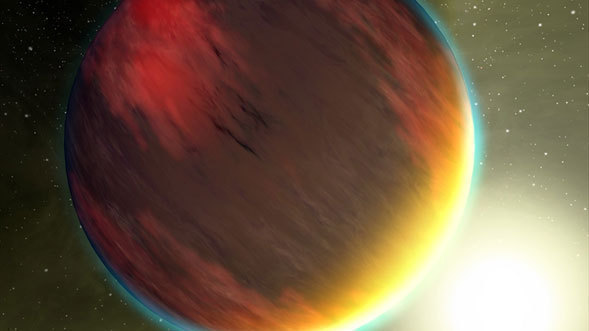
NASA’s Spitzer Space Telescope has captured for the first time enough light from planets outside our solar system, known as exoplanets, to identify signatures of molecules in their atmospheres. The landmark achievement is a significant step toward being able to detect possible life on rocky exoplanets and comes years before astronomers had anticipated.
“This is an amazing surprise,” said Spitzer project scientist Dr. Michael Werner of NASA’s Jet Propulsion Laboratory, Pasadena, Calif. “We had no idea when we designed Spitzer that it would make such a dramatic step in characterizing exoplanets.”
Spitzer, a space-based infrared telescope, obtained the detailed data, called spectra, for two different gas exoplanets. Called HD 209458b and HD 189733b, these so-called “hot Jupiters” are, like Jupiter, made of gas, but orbit much closer to their suns.
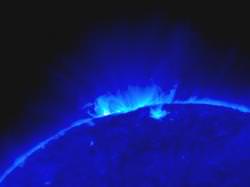
They’re the Solar TerrEstrial RElations Observatories (STEREO… get it?), and they were lofted into orbit on October 25 http://www.universetoday.com/2007/01/25/first-images-of-the-sun-from-stereo/